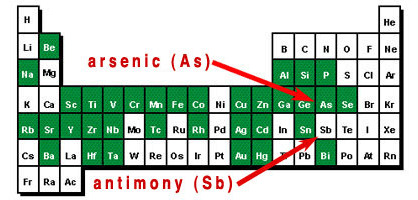Table of Contents
Where to Explore for Mercury Minerals
The principal ore of mercury is cinnabar, HgS, known by its bright red color (vermilion-red when powdered), its great weight, and its softness. Cinnabar is found in irregular veins, breccia zones, stockworks, and disseminations in rocks of all kinds and ages in regions of present or past volcanic activity; the deposits are often near hot springs. The valuable deposits of cinnabar have been found along lines of great disturbance, such as extensive mountain ranges. This mineral has been produced in Canada at two mines on the Pinchi Lake regional fault zone in Central British Columbia northwest of Fort St. James. “The ore bodies at the Pinchi Lake and Bralorne Takla mines occur in sheared and brecciated altered Permian limestones or in carbonated serpentine. The cinnabar occurs mainly as veinlets, blebs, and individual grains filling pre-existing openings.”
The accompanying minerals are pyrite (sometimes marcasite) and stibnite, but not often any of the other common sulphides. The gangue is usually quartz, especially the opal and chalcedony varieties, calcite, and dolomite.
Mercury is found in small quantities in the silver ores of Cobalt and Silver Islet, Ontario, and was formerly mined near Kamloops Lake, B.C., where it is found in irregular veins in lava flows, and also disseminated in sandstone.
Where to Find Antimony Deposits
The principal ore of antimony is stibnite, Sb2S3, which is found in commercial quantities in veins, with a quartz gangue. Jamesonite, composed of lead, antimony, and sulphur, and bournonite, a copper-lead-antimony-sulphur mineral, may be commercially important for the antimony. Stibnite veins are found in connection with igneous intrusions in gold regions, and may carry paying quantities of gold; they are also found in shale and sandstone. Replacement deposits in limestone and shale are frequent.
When well crystallized, the stibnite is easily recognized by its lead-gray color, its softness, and its bright cleavage surfaces in streaks. At the surface, the ore may be weathered to oxides of yellowish or white color, which may however be hidden by rusty weathering products of pyrite. At West Gore, Hants County, Nova Scotia, are veins of gold-bearing stibnite in slate, with calcite and quartz as gangue. Pyrite, mispickel, and galena are abundant in places. The stibnite sometimes carries several ounces of gold to the ton. At Prince William, New Brunswick, stibnite and native antimony occur in quartz veins cutting slate and quartzite near intrusions of granite and diabase. At South Ham, Quebec, native antimony and stibnite occur in a schistose, slaty rock at its contact with serpentine and diabase. In British Columbia, stibnite is found in the Slocan district with some of the silver-lead-zinc ores, and the antimony has been recovered in considerable quantity in refining the lead. Stibnite in quartz veins has been found near Tagish Lake and near Cadwallader Creek.
Where to Find Arsenic Ore
Most of the white arsenic (As2O3) of commerce is obtained as a by-product from ores of silver, cobalt, nickel, gold, and copper. But mispickel (FeSAs) is sometimes found in veins, with quartz gangue. The mineral is easily recognized by its great weight, its bright silvery or lead-gray color, its hardness, and the smell of garlic when the mineral strikes fire with steel. Enargite (Cu3AsS4) has also been a source of arsenic. The principal Canadian production of white arsenic has been from the silver ores of Cobalt, Ontario, and the gold ores of Ontario, British Columbia, and Nova Scotia. A large amount of arsenic, recovered from the gold ore of the Yellowknife camp in the Northwest Territories, has had to be buried securely in underground openings to get rid of it.
